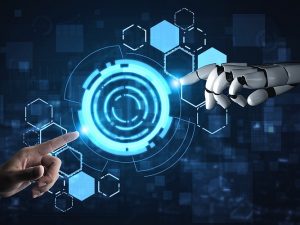 Chief Data Officers (CDOs) are one of the newer positions in government, but their role is quickly becoming one of the most critical. A CDO is charged with overseeing data-related functions, including data management, ensuring data quality, and creating data strategy. For government agencies, this requires close coordination with the Federal Data Strategy and the DoD Data Strategy.
Chief Data Officers (CDOs) are one of the newer positions in government, but their role is quickly becoming one of the most critical. A CDO is charged with overseeing data-related functions, including data management, ensuring data quality, and creating data strategy. For government agencies, this requires close coordination with the Federal Data Strategy and the DoD Data Strategy.
Both of these documents define the specific roles and responsibilities of data officers and provide a framework for working with and securing data. Of course, each agency has unique requirements and missions, leaving the CDO to work out how to apply this guidance and standards to their organization.
Agencies are meeting these guidelines and integrating CDOs in different ways. The Department of Homeland Security (DHS) recently announced a department-level CDO office to better integrate data into its operations and those of other agencies. The need for this level of coordination was underscored as DHS launched a department-wide COVID-19 vaccination campaign in partnership with the Department of Veterans Affairs health centers. DHS needed to identify, contact and manage responses from workers, which meant collecting and reconciling many different datasets from across the department.


 As we emerge from the isolation of the pandemic and begin interacting in person again, it will be in a world that looks and feels a lot different. While we crave human interaction, that does not mean we want to go back to standing in lines at office buildings to complete certain tasks. Over the past year, people have gotten used to doing things virtually. Government agencies have made incredible progress moving traditionally manual, paper-intensive, in-person processes online, and there's no reason that should stop now that in-person is an option.
As we emerge from the isolation of the pandemic and begin interacting in person again, it will be in a world that looks and feels a lot different. While we crave human interaction, that does not mean we want to go back to standing in lines at office buildings to complete certain tasks. Over the past year, people have gotten used to doing things virtually. Government agencies have made incredible progress moving traditionally manual, paper-intensive, in-person processes online, and there's no reason that should stop now that in-person is an option. Artificial Intelligence is being implemented across government to modernize and automate traditional manual processes. For many organizations, this means taking paper-based, tedious, error-prone tasks and turning them over to a machine for automated completion. Beyond using AI to hand off tasks best completed by machines -- those that are rote and repetitive -- agencies are also looking at ways to introduce the technology into already complex human-driven activities to make them even more effective and efficient.
Artificial Intelligence is being implemented across government to modernize and automate traditional manual processes. For many organizations, this means taking paper-based, tedious, error-prone tasks and turning them over to a machine for automated completion. Beyond using AI to hand off tasks best completed by machines -- those that are rote and repetitive -- agencies are also looking at ways to introduce the technology into already complex human-driven activities to make them even more effective and efficient. The last year has brought about incredible change in the federal workforce, and it shows no sign of stopping. With a new Director for the Office of Personnel and Management (OPM)
The last year has brought about incredible change in the federal workforce, and it shows no sign of stopping. With a new Director for the Office of Personnel and Management (OPM) 
